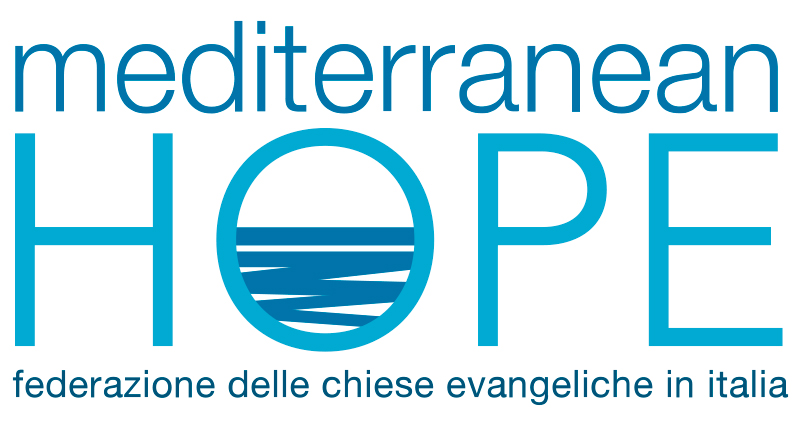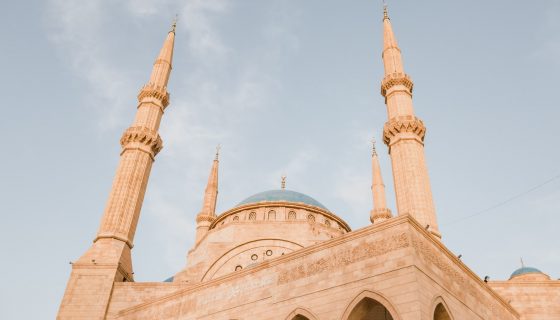- Mediterranean Hope - Federazione delle chiese evangeliche in Italia
- mh@fcei.it
Italian Foreign Affairs Minister urges colleagues to copy initiative of ‘humanitarian corridors’
Benoit Lannoo / Blogactiv
November 4, 2016
Guest blog post by Benoit Lannoo, Consultant Communication & Policy Strategies.
End of October, over a hundred extra refugees were brought over from Beirut to the Roman airport Fiumicino via the so-called ‘humanitarian corridors’ set up by the Community of Sant’Egidio and the Federation of Protestant Churches in Italy (Federazione delle Chiese Evangelice in Italia – FCEI). Since the start of this pilot-project earlier this year, more than four hundred children, women and other vulnerable refugees mainly from Aleppo or Homs in Syria have been able to leave Lebanese refugee camps in order to join Italy. Indeed, the Italian government is supporting firmly this initiative and the Italian Minister of Foreign Affairs, M. Paolo Gentiloni, also present to welcome the new groups of refugees at Fiumicino, has expressed the wish “that the concept of the ‘humanitarian corridors’ will soon also be adopted by other European Member States”.
What is it all about? In order to draw some conclusions, a conference hosted by the Vice-President of the European Parliament, M. Antonio Tajani (Italy, EPP), and attended by several MEP’s such as M. Ivo Belet (Belgium, EPP), M. Lorenzo Cesa (Italy, EPP), M. György Hölvényi (Hungry, EPP), Ms Cécile Kashetu Kyenge (Italy, S&D), Ms Elly Schlein (Italy, S&D), M. Tom Vandekendelaere (Belgium, EPP) and Ms Anna Záborská (Slovakia, EPP), was held in European Parliament in Brussels on Tuesday June 28.
“It was the disaster of Lampedusa on October 3, 2013 that opened our eyes – although this was unfortunately not the last catastrophe in the Mediterranean Sea” as Prof. Paolo Naso from the Roman university La Sapienza, who coordinates the project for the FCEI, has been recalling. “But since three years now, we are very conscious of the fact that we have to do something! And since the Community of Sant’Egidio was also looking actively for alternatives for the actual European migration policies, we began to develop this concept of the ‘humanitarian corridors’ together, acting in close collaboration with the Italian authorities. Indeed, remember it: the European reaction at the time, was to reduce the Lampedusa problem to be an Italian problem.”
“EU-Member States were and still are somehow mutually holding each other hostage”, has been explaining M. Mauro Garofalo, responsible for international relations at the Community of Sant’Egidio. “We have to think out of the box to get out of this catch-22. What is essential in our renewing approach, is primo that we are perfectly in phase with existing migration legislation, secundo that the costs of our operation are not covered by European nor national tax payers (in this case the Italian ones) but that the operation is financed by civil society – by our churches and communities -, and tertio that Sant’Egidio has proven experience in the integration of refugees and can guarantee that these refugees in Italy will be welcomed, hosted and helped towards that integration.”
Of course, there is the problem of the selection criterion of the candidates amongst the refugees to benefit from this project. “We have a single criterion, which is the vulnerability of the persons concerned”, has been saying M. Garofalo. It concerns refugees with urgent medical issues, children, widows with their families, and elderly or disabled persons. For selection in the Lebanese refugee camps, Sant’Egidio and the protestant church organisations involved collaborate with local authorities and organisations, and with the United Nations services. “But the final decision is always taken by the hosting country. In the cases so far, that were the Italian authorities. They are responsible for security matters and this concept guarantees their ability to manage them.”
Prof. Naso always summarizes the concept in five words. Firstly: these ‘humanitarian corridors’ are possible, since the initiative is based on Article 25 of Regulation (EC) 810/2009 of 13 July 2009 that establishes the possibility of granting visas with limited territorial validity, notwithstanding the entry provisions pursuant to the Schengen Borders Code, “for humanitarian reasons or national interest or under International obligations”. Secondly: they guarantee the security of both the concerned Member States (since refugee fingerprints are taken before departure in Lebanon) and refugees (who are not likely to fall into the hands of human trafficking anymore). Thirdly: this is a sustainable concept, since costs are indeed covered by the churches and communities involved. “But this does not mean that we don’t appeal political and public stakeholders to join our efforts.”
The last two words of Prof. Naso’s summary are fundamental: this is an ecumenical(Catholics and protestants working together) and profoundly European initiative. “It is often debated whether or not the European dream has Christian roots”, Prof. Naso says referring the introduction to the conference in European Parliament by M. Tajani, Vice-President of the Assembly. “This humanitarian initiative is obviously a Christian fruit of our European heritage, a fruit however not to be limited to only Christians.” Prof. Naso: “I do not believe that Altiero Spinelli or Robert Schuman have dreamed of Europe stating how much cocoa a chocolate bar should contain. When European values are mentioned, are we not primarily talking about the value of the life of every individual human being?”
The organizers of these ‘humanitarian corridors’ are expressing their hope that the number of vulnerable refugees hosted in Italy can increase to a thousand before the end of the year. Is it a drop on a hot plate? “It might be more than that”, says M. Garofalo, “because of the huge impact an initiative as this one can have on public opinion. A Syrian child with an eye tumour brought in security into an Italian hospital has been prominently covered in Italian newspapers. Such examples can change the perception of the so-called ‘refugee crisis’.” The organizers of the ‘humanitarian corridors’ are indeed hoping to convince more European Member States about the replicable character of this civil society initiative in the migration challenges of this beginning 21st century.
Benoit Lannoo was active in Belgian politics (amongst other at the offices of the former State Secretary for International Cooperation, Dr Réginald Moreels, at the offices of the former Deputy Prime Minister in charge of Asylum and Migration Policies, Ms Joëlle Milquet, and at the offices of the former President of the Senate, Ms Sabine de Bethune) and in the Belgium Catholic Church (amongst others organising the solidarity mission of the Belgium Conference of Bishops of September last year towards the refugees in Northern Iraq for Mgrs Jozef De Kesel, Guy Harpigny and Leon Lemmens). He is now a consultant in Communication and Policy Strategies.





